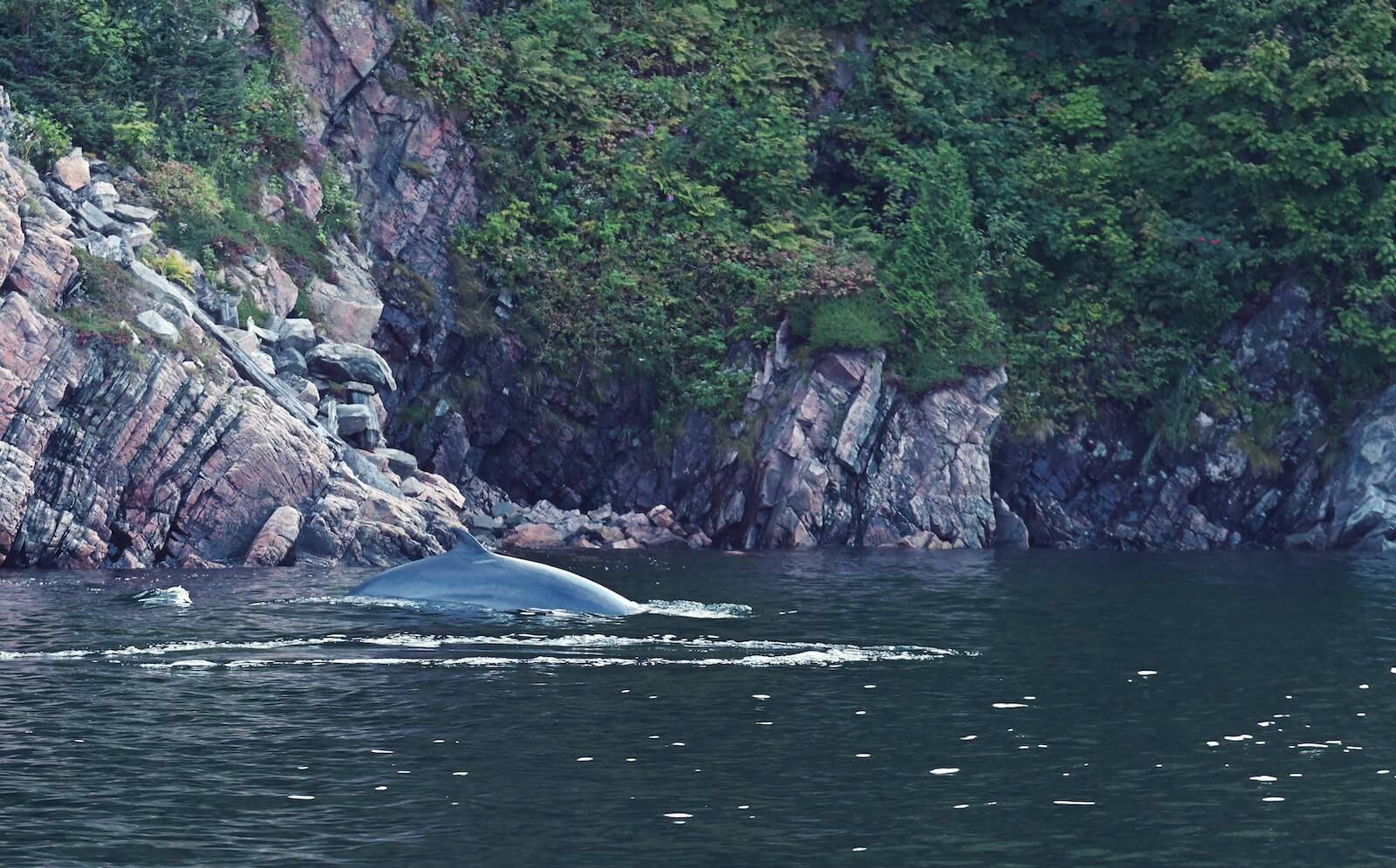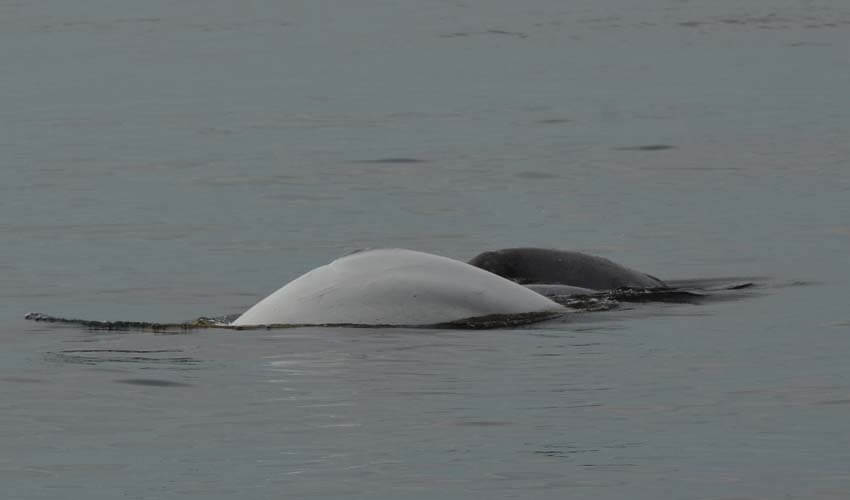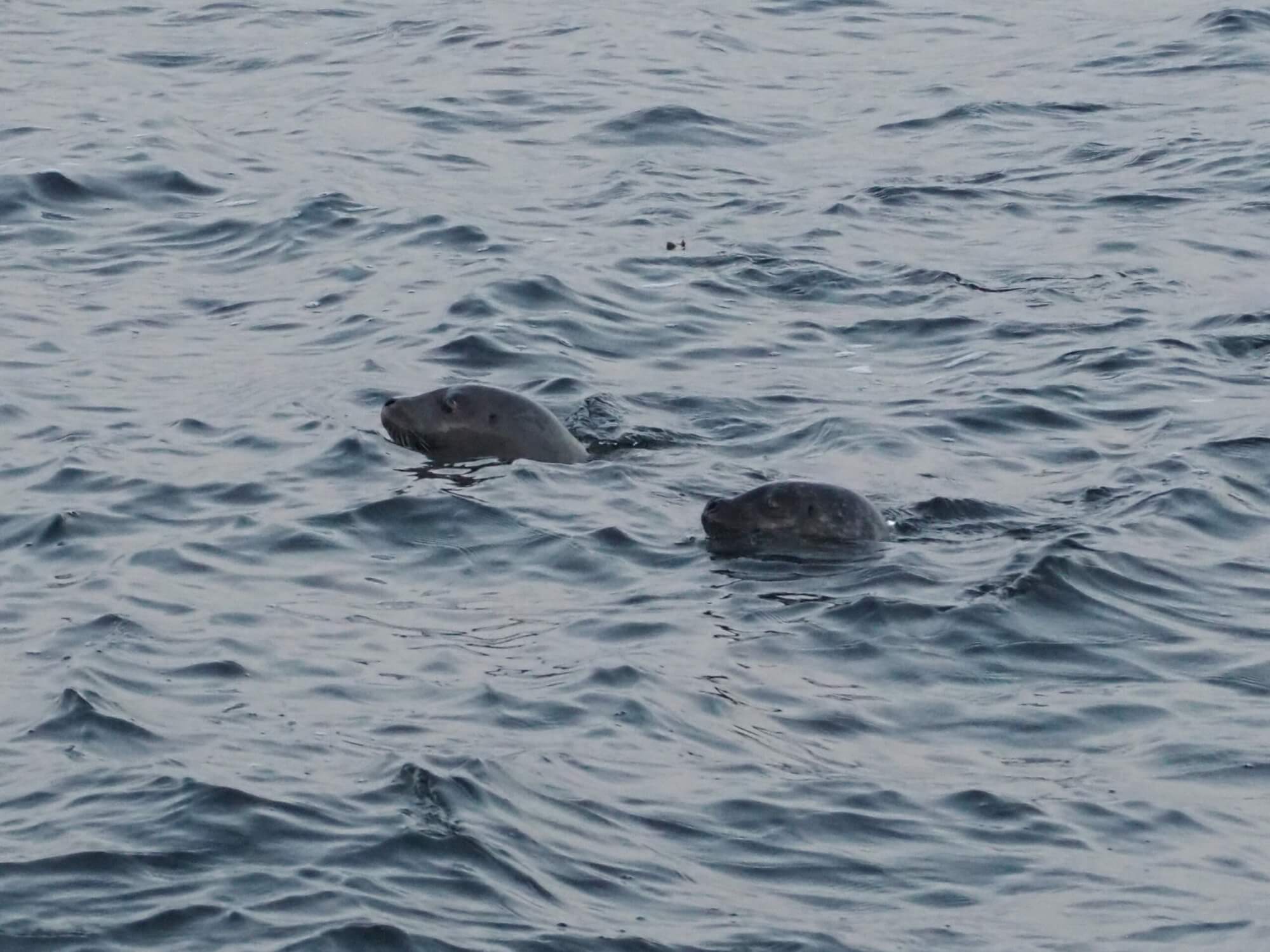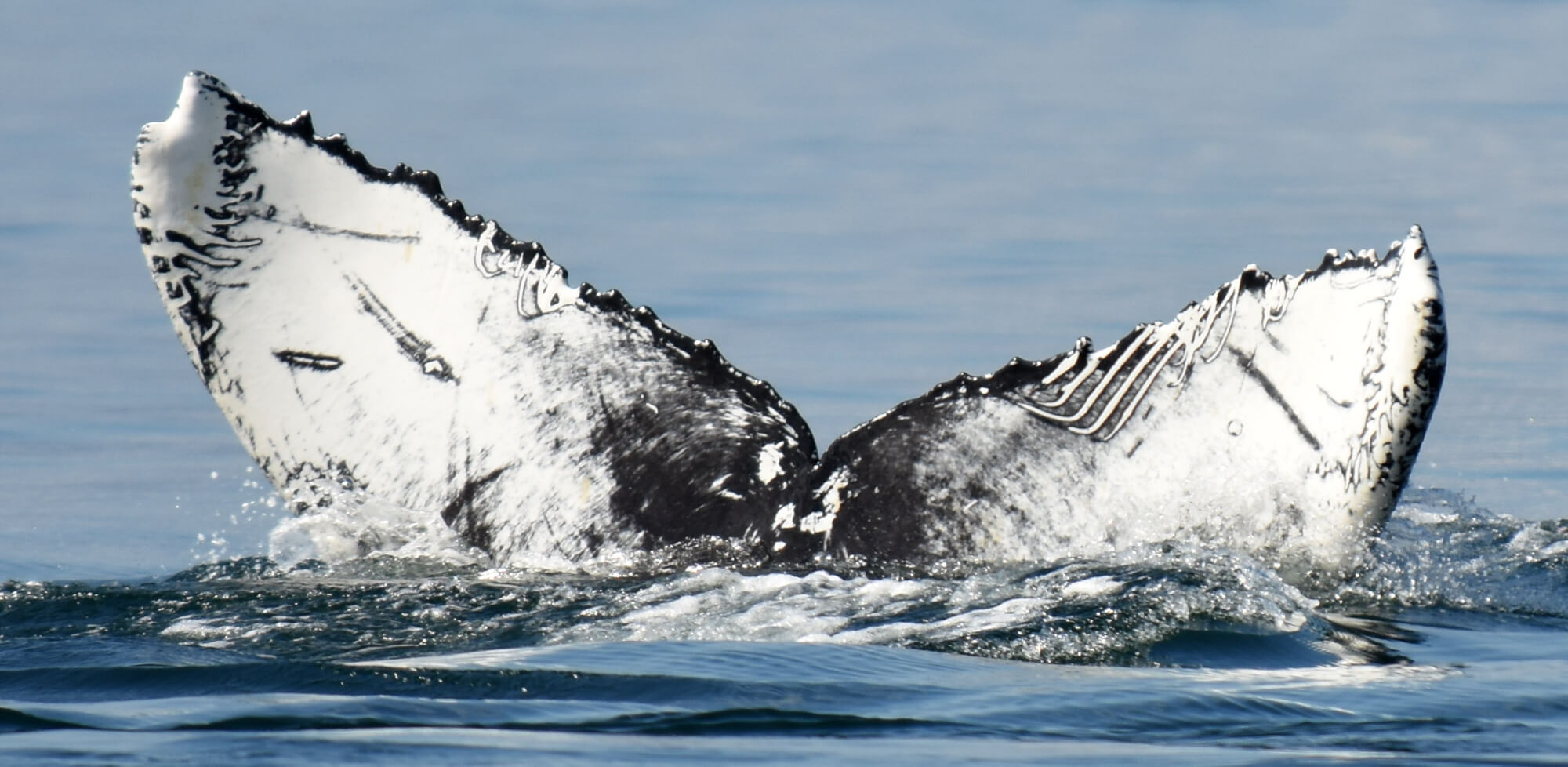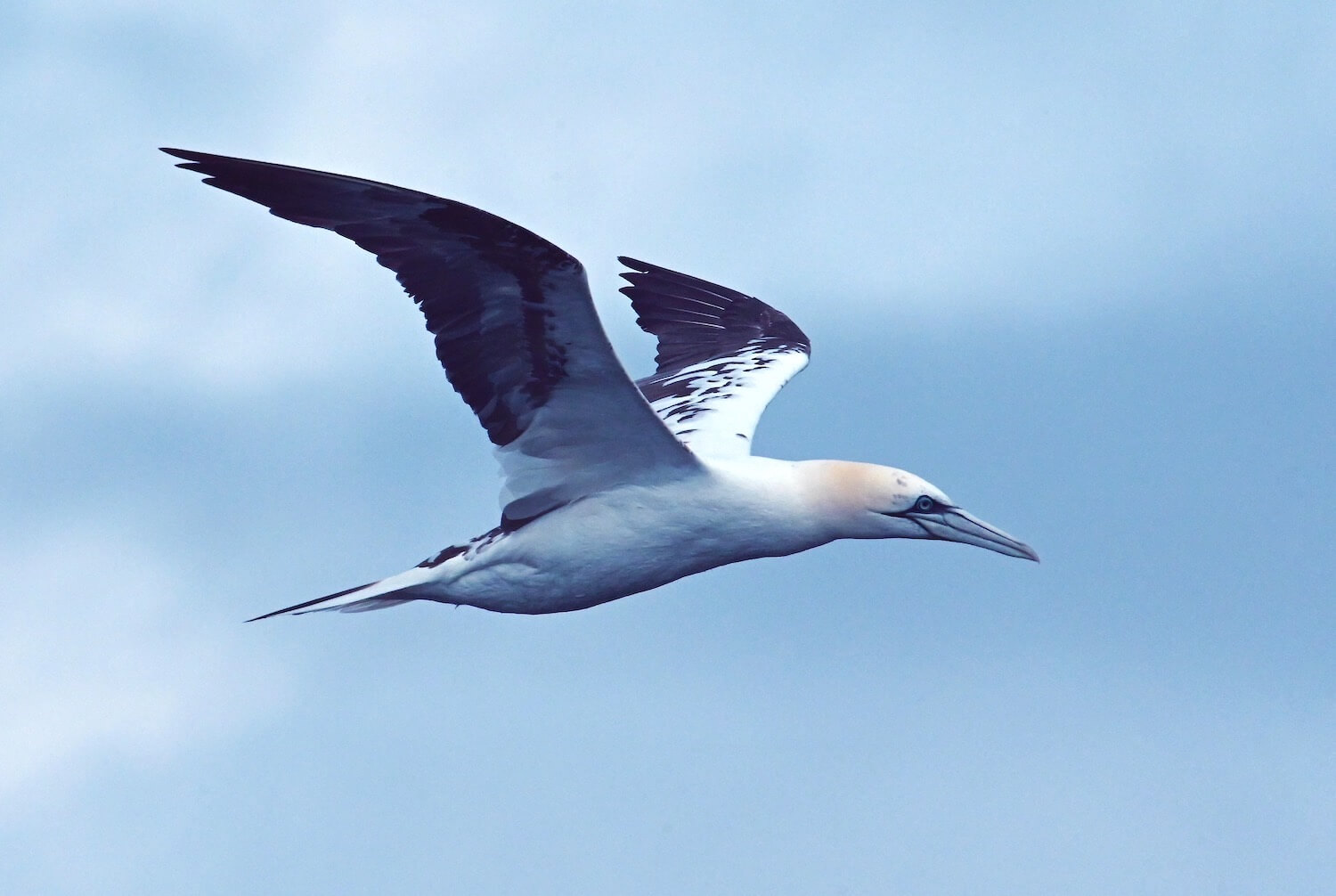A small adventurous rorqual, identified belugas, the arrival of several large rorquals… What more could you ask for in late August? How about shooting stars, large blasts offshore or white-sided dolphins in Gaspésie?
A small rorqual in Baie des Ha! Ha! Ha!
A small rorqual made an incursion a little farther up the Saguenay Fjord than what is normally expected for this species. For several days, it lingered in Baie des Ha! Ha! in the town of La Baie, and near Cap Jaseux in Saint-Fulgence. According to Robert Michaud, scientific director for the Group for Research and Education on Marine Mammals, the presence of this cetacean is not exceptional, but is encouraging boaters to keep their distance from the animal. A few harbour seals also ventured up the Saguenay in recent days. Could the presence of food have attracted these marine mammals?
Identifying belugas
GREMM’s research team is working hard to ID all the belugas photographed this past season. Several individuals featured in GREMM’s “family album” have been identified, notably DL9104, a female born around 2013 who had not been seen since 2021, and Miss Frontenac (Dl2286), first observed by GREMM in 2004 shortly after she was born. In the photos taken this year, Miss Frontenac was accompanied by a calf! There was also an observation of Dl3026, a male with a pretty grey spot on his right flank and who has been known since 2011.
The beluga Marjo (Dl0512) has also had its picture taken. The GREMM team first encountered Marjo in 1994, at which time she was still grey. She turned completely white in 2000. Belugas fade from grey to white in colour between the ages of 12 and 16, Marjo would therefore have been born in the mid-1980s, around the same time our beluga research project was being launched.
Also identified was the beluga Dl2694, who can be recognized by a W-shaped notch on its left flank, at the end of its dorsal ridge, and by another small notch on the same side between the beginning and the middle of its ridge. One of the better-known grandmothers of the St. Lawrence, Blanche (Dl1757), was also spotted.
Observing marine fauna… under water!
While snorkelling, two girlfriends had the opportunity to admire the marine fauna of the St. Lawrence, from the smallest individuals to the largest! Following their activity in Les Escoumins’s Baie des Anémones, one of the snorkellers shared some of the day’s sightings: “In addition to seeing polar six-rayed stars, a common sunstar, sea cucumbers, anemones and sea peaches, we also saw a minke whale and a humpback.” The whales were a good distance away and a little farther out, and one of the snorkellers was able to admire them as she took a breathing break at the surface… at the same time as the two cetaceans!
From fog to shooting stars!
For one naturalist, the sighting of a whale in Tadoussac was somewhat mysterious: “A humpback whale caused quite a surprise by diving very close to Pointe de l’Islet, surrounded by belugas and feeding minke whales. We were then shrouded in a patch of fog, and the humpback disappeared into the mist.” During a day of whale watching from this rocky point at the entrance to the Saguenay, one marine mammal enthusiast got a good overview of all the action that occurs there: grey and harbour seals, belugas offshore, one of which even showed its tail, groups of belugas migrating with the tide, a minke whale swimming between Pointe Rouge and Pointe de l’Islet, and another minke whale engaged in feeding behaviours.
In the Saguenay-St. Lawrence Marine Park, a herd of over a hundred grey seals was swimming offshore, accompanied by kittiwakes and gulls. There were also close to ten humpbacks, one or two fin whales and one or two blue whales.
One evening in Les Escoumins, a handful of Côte-Nord residents settled down on the rocks to take in the majestic river. Two belugas and a minke whale round out this sublime get-together. “We stayed until nightfall,” says one of them, “and we saw shooting stars, which made it all the more enjoyable.”
Arrival of the humpback whale Chewbacca and the blue whale Pulsar
This week, the arrival of the humpback Chewbacca was reported. The tail of this individual can be recognized by the presence of several scars. Its left lobe is “clipped,” and, on the tip of the right lobe, there are bite marks that have been there ever since the whale was first identified in 2015. These marks are the result of an attack by killer whales.
Blue whale B036, otherwise known as Pulsar, is also making a big return to the estuary! According to the GREMM catalogue, it had not been seen in the area since 2014. It was first observed in 1990. Another individual blue whale might also be in the area. The blue whale has been listed as endangered in Canada since 2002.
Minke whales in action
At the Baie-Comeau marina, a few minke whales have definitely become regulars. Local residents even came up with a nickname for one of them: “Rolande.” Grey seals, harbour seals, razorbills and northern gannets further add to the hubbub. There are also reports of a fin whale offshore and humpbacks blowing near Franquelin. At Pointe-des-Monts, a local mentions the presence of minke whales and grey seals.
Near Mingan, a mariner sailing the saline waters crosses paths with grey seals, harbour seals, harbour porpoises and minke whales.
Exciting times for marine mammals in Gaspésie
In the Gaspé Peninsula, the past few days have seen favourable weather, which bodes well for whale watching near the water! One or two fin whales and as many humpbacks are still in the area, but you have to look for them, remarks a resident of Gaspé. Minke whales and harbour porpoises have been very active.
“Grey seal numbers are trending upward,” says a naturalist, “which is unfortunate for the harbour seals! Off the coast of Cap-Gaspé, white-sided dolphins were actively hunting, interspersed with bluefin tuna, all under a swarm of gannets!”She was also surprised by the presence of a North Atlantic right whale in the area. This species spends a great deal of time at the surface and is a very slow swimmer. North Atlantic right whales are skimmers that can feed in deep waters or at the surface. They feed on zooplanktonic crustaceans such as copepods and occasionally krill. Basking sharks have also been in the area.
Between invertebrates, sharks, tuna, seals and whales, it was a week marked by tremendous diversity!
Where are the whales this week? Observation map
These data were reported by our network of observers. They give an idea of the presence of whales and in no way represent the actual distribution of whales in the St. Lawrence. Just for fun!
Click on the whale or seal icons to discover the species, the number of individuals, additional information or photos of the sighting. To enlarge the map, click on the icon in the top right-hand corner. The map works well on Chrome and Firefox, but not so well on Safari.
To display the list of sightings, click on the icon in the top left-hand corner.
Thanks to all our collaborators!
Special thanks go out to all our observers who share their love for marine mammals with us! Your encounters with cetaceans and pinnipeds are always a pleasure to read and discover.
On the water or from shore, it is your eyes that give life to this column.
Odélie Brouillette
Marie-Andrée Charleboix
Clara Comeau
Guylaine Côté
Thalia Cohen Bacry
Laetitia Desbordes
Christian Gagnon
Tania Girardot
Louise Lapierre
Jade-Audrey Lavergne
Yael Medav
Élizabeth Melis
Camille Némond
Diane Ostiguy
Chloé Pazart
Renaud Pintiaux
Pascal Pitre
Jean Roy
Christine Stadelmann
Andréanne Sylvain
Marielle Vanasse
Additionally, we would like to acknowledge the following teams that also share their sightings:
Sept-Îles Research and Education Centre (CERSI)
Group for Research and Education on Marine Mammals (GREMM)
Marine Mammal Observation Network (MMON)
Quebec Marine Mammal Emergency Response Network (QMMERN)
Mingan Island Cetacean Study (MICS)
Would you also like to share your observations?
Have you seen any marine mammals in the St. Lawrence? Whether it’s a spout offshore or just a couple of seals, drop us a line and send your photos to [email protected]!


